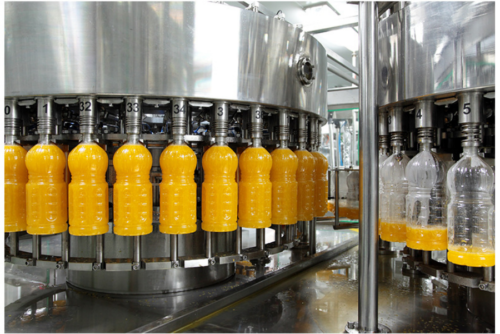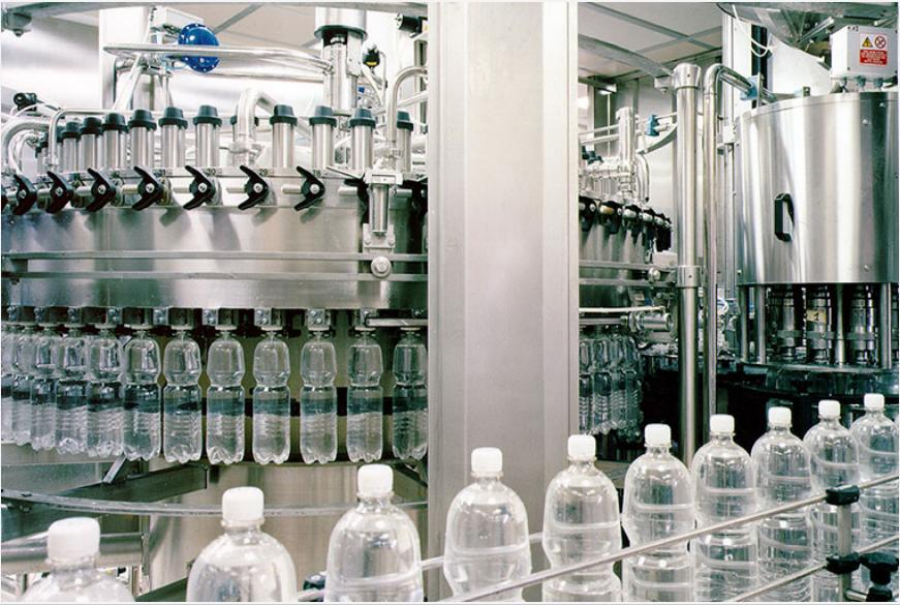Basics of hot filling
Hot filling is a proven and widely recognized process commonly used for filling highly acidic foods (pH ≤ 4.6). This process is widely used for filling glass and plastic containers because it can maintain the shelf life of the product at room temperature. The hot filling process relies on heat treatment of the product in a plate or plate heat exchanger at a temperature between 90-95 degrees Celsius for a duration of 15-30 seconds to ensure that all microorganisms capable of growth are killed, thereby producing a “commercially sterile product”.
Subsequently, the product is cooled and filled into containers at a temperature of 82-85°C, immediately sealed with a closure, and maintained for about 2-3 minutes to sterilize the inner surface of the container. The filled container is usually placed on its side so that the neck and closure can also be sterilized. Finally, the container is placed in a cooling tunnel to cool to minimize thermal degradation of the product.

Purpose of hot filling
The main purpose of hot filling is to provide a product that does not contain microorganisms that can grow under ambient storage conditions, that is, a “commercially sterile product”. Commercially sterile or heat-processed foods are products that are free of pathogenic microorganisms, toxic substances, and can remain uncorrupted under non-refrigerated storage and distribution conditions. In addition, high-temperature filling can reduce the viscosity of foods, making them easier to handle.
Relationship between microbial spoilage and acidity of foods
The nature of food largely determines its susceptibility to microbial spoilage. Temperature and water activity are important factors affecting microbial spoilage of foods. The pH value or acidity of foods is also a key factor. Low pH (high acidity) limits the growth of many microorganisms and destroys foods.
Therefore, understanding the acidity of foods is crucial in determining process conditions and product shelf life. Foods are usually divided into two categories based on their acidity: high-acid foods (pH ≤ 4.6) and low-acid foods (pH > 4.6).
Applications and advantages of hot filling
Hot filling technology is widely used in non-carbonated beverages and liquid foods, such as fruit juices, vegetable juices, juice drinks, soft drinks, energy drinks and tea drinks. Beverage filling machines are key equipment for implementing hot filling processes. It is able to complete a series of operations such as high temperature treatment, filling, capping and cooling during the hot filling process through specific design and functions.
The shelf life of products using hot filling technology is usually 6 to 12 months.The main advantage of hot filling is its protection of the natural properties of the product. Due to the high temperature treatment used in the filling process, the freshness and natural flavor of products such as juice can be maintained without relying on chemicals or preservatives. In addition, this technology avoids the contact of packaging materials with chemicals, further ensuring the safety and hygiene standards of the product.
The design of the hot filling process ensures the circulation of the product during the filling process, similar to the gravity low vacuum system, which helps to maintain the stability of the filling temperature when the machine stops running. This stability is essential to maintain product quality, especially in the production of non-carbonated beverages.
In general, hot filling technology has become an important filling option in the liquid food industry with its advantages in extending the shelf life of products, maintaining the naturalness of products, avoiding the need for chemical sterilization, and wide applicability. With this technology, beverage filling line manufacturers are able to provide consumers with healthier, safer and more natural beverage options while meeting the market demand for long-shelf products.
Summary
Hot filling is a mature and effective process suitable for a variety of high-acid foods. Although it requires higher costs and specific packaging requirements, it can extend the shelf life of products and maintain the naturalness and nutritional value of foods. It is the first choice of many beverage and liquid food manufacturers. If you need more guidance on hot filling technology, you can contact HuiRun Beverage Machinery, a professional supplier of juice filling machines and beverage filling machines, who can provide the best solution for your products.


